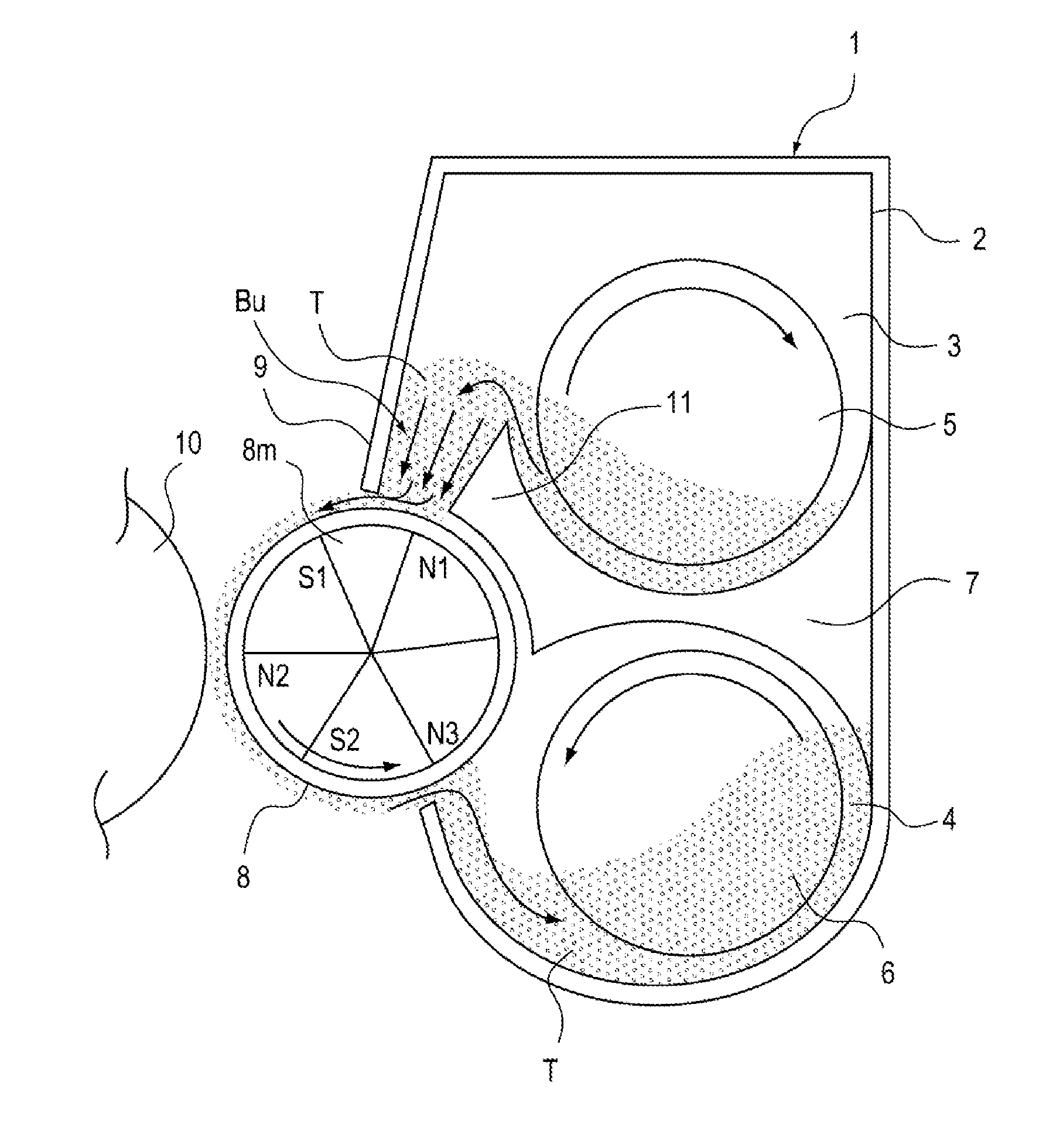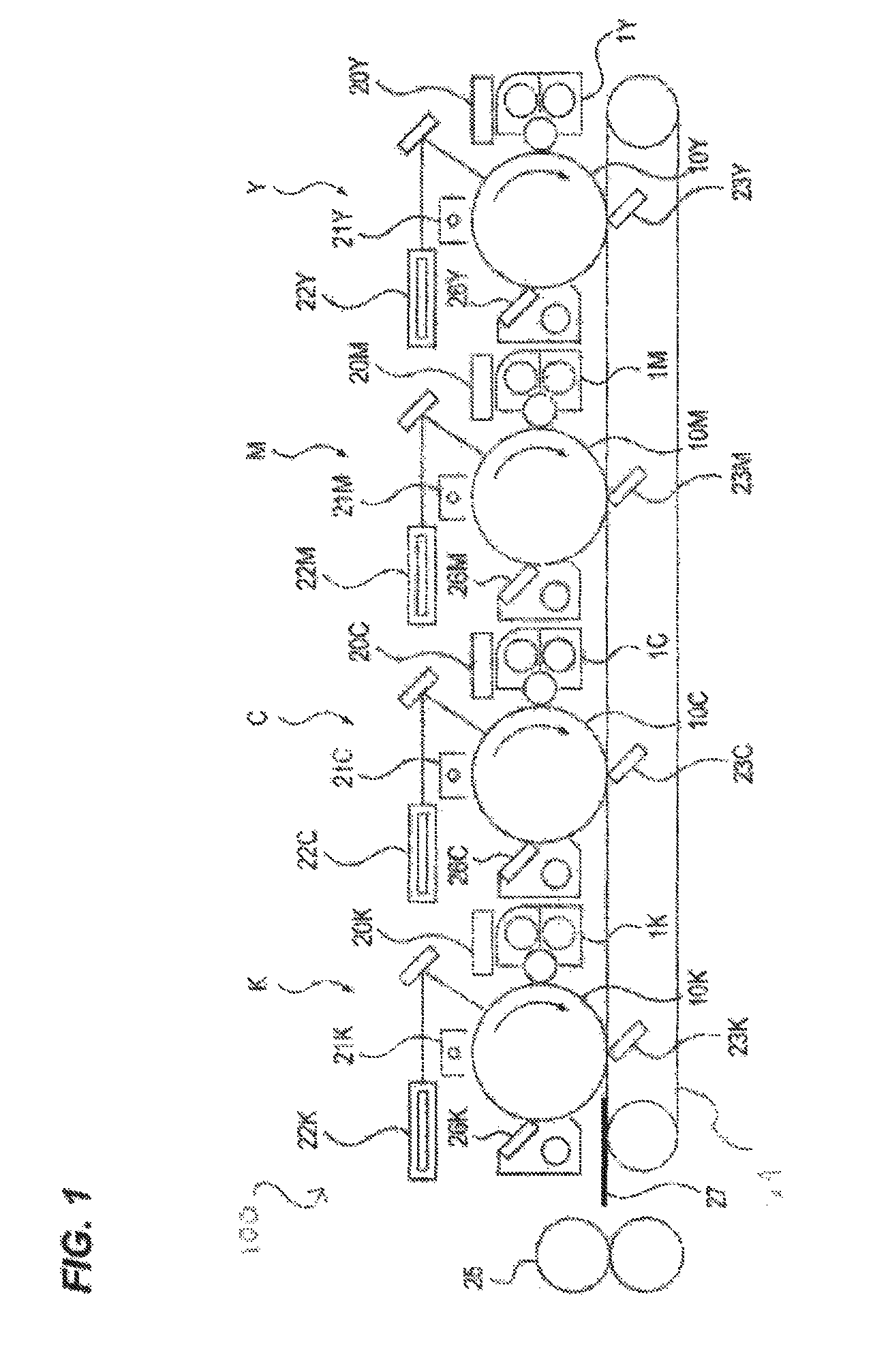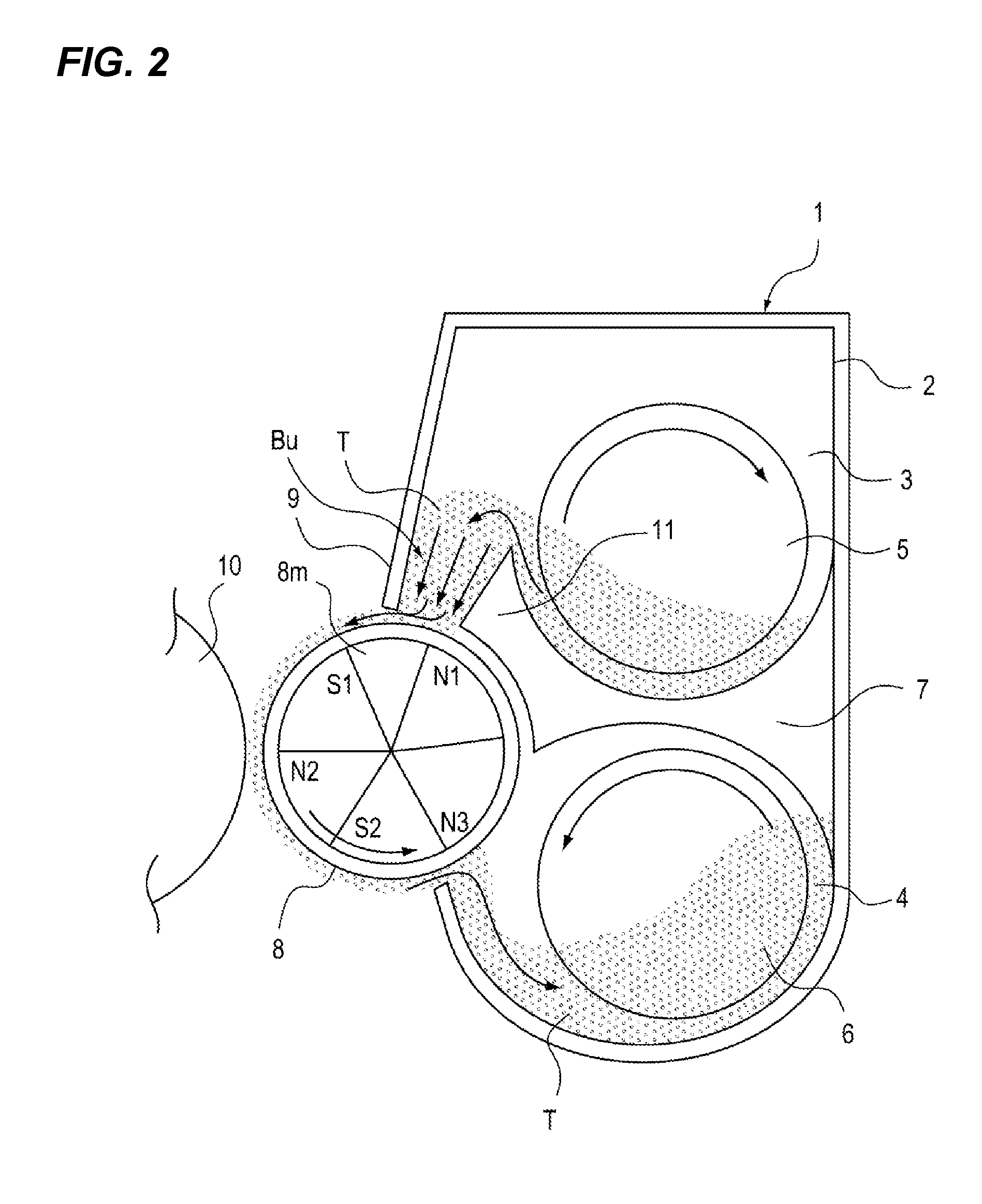Developing device and image forming apparatus
a technology of developing device and image forming apparatus, which is applied in the direction of electrographic process apparatus, instruments, optics, etc., can solve the problems of deterioration of developer, affecting the development of the product, so as to reduce the effect of reducing the unsteadiness of the coa
- Summary
- Abstract
- Description
- Claims
- Application Information
AI Technical Summary
Benefits of technology
Problems solved by technology
Method used
Image
Examples
first embodiment
[0045]FIG. 1 is a view for describing a positional relation between an image forming apparatus and a developing device of a first embodiment. In the image forming apparatus 100, a positional relation between a photosensitive drum (image bearing member) 10 and a developing device (developing portion) 1 at each one of Y, M, C, and K stations is illustrated in FIG. 1.
[0046]The Y, M, C, and K stations have substantially the same configuration, and form yellow (Y), magenta (M), cyan (C), and black (K) images in a full-color image, respectively. In the following description, for example, the developing device 1 will commonly indicate a developing device 1Y, a developing device 1M, a developing device 1C, and a developing device 1K at the respective Y, M, C, and K stations.
[0047]First, an operation of the entire image forming apparatus will be described based on FIG. 1. A photosensitive drum 10 is installed so as to be freely rotatable. The photosensitive drum 10 is uniformly charged by a ...
second embodiment
[0111]A second embodiment of the present invention is described. Since a basic configuration is the same as in the first embodiment, elements having a function and configuration that are substantially identical or equivalent to those of the first embodiment are indicated with the same reference numerals, and detailed description thereof is omitted herein. Hereinafter, only constituent portions unique to the present embodiment will be described in detail.
[0112]In the first embodiment, the angle α of the tip surface of the guide member 11 is set to be greater than the angle β of the external force F which the developer receives relative to the horizontal plane on the surface of the guide member 11, and the sticking of the developer to the surface of the guide member 11 is reduced.
[0113]However, as described previously, β has a tendency to be gradually increased in proportion to the distance from the surface of the developing sleeve. For this reason, when the length of the guide member...
third embodiment
[0123]A third embodiment of the present invention is described. Since a basic configuration is the same as in the first embodiment, elements having a function and configuration that are substantially identical or equivalent to those of the first embodiment are indicated with the same reference numerals, and detailed description thereof is omitted herein. Hereinafter, only constituent portions unique to the present embodiment will be described in detail.
[0124]FIG. 20 is a cross-sectional view for describing a guide member of a third embodiment. As illustrated in FIG. 20, in the present embodiment, the surface of the guide member 11 is set to a curved surface. Thus, an angle α which a tangent at each point on the surface of the guide member 11 forms with respect to the horizontal plane at that point is set to an angle β which an external force F, which is a resultant force of a magnetic force Fm and a gravitational force Fg which the developer receives at that point, forms with respec...
PUM
 Login to View More
Login to View More Abstract
Description
Claims
Application Information
 Login to View More
Login to View More - R&D
- Intellectual Property
- Life Sciences
- Materials
- Tech Scout
- Unparalleled Data Quality
- Higher Quality Content
- 60% Fewer Hallucinations
Browse by: Latest US Patents, China's latest patents, Technical Efficacy Thesaurus, Application Domain, Technology Topic, Popular Technical Reports.
© 2025 PatSnap. All rights reserved.Legal|Privacy policy|Modern Slavery Act Transparency Statement|Sitemap|About US| Contact US: help@patsnap.com



